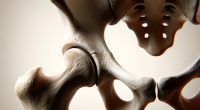Arrhythmia
Disease
Cardiac arrhythmia is a pathological condition in which the natural rhythm of the heart contractions changes. In the normal state of the heart, the speed and rhythm of each of its four chambers is maintained by the sinus node, a physiological formation located at the top of the right atrium. When exposed to external or internal pathological factors, the node and/or other parts of the heart’s conduction system are disturbed, resulting in arrhythmia.
Because of the widespread occurrence of heart arrhythmias, therapists and cardiologists encounter them all the time. Arrhythmia cannot be considered an independent disease, it is simultaneously a symptom of many diseases. The most common disruption of the heart rhythm is extrasystole (premature contractions of the heart). Arrhythmias affect people of all ages, but most often heart disorders occur in middle and old age.
Types of heart rhythm disorders
Classification of heart rhythm disorders is performed depending on the heart chamber where the problems are detected. There are three main types of arrhythmias:
- sinus arrhythmias;
- atrial arrhythmias;
- ventricular arrhythmias.
Further division into types occurs, according to the frequency of heart contractions:
- Tachycardia is a pathological condition in which the pulse is accelerated and exceeds 80-90 beats per minute. It is considered normal in action, but at rest, this heart rate is abnormal.
- Bradycardia is a subtype of arrhythmia characterized by a slowing heart rate below 60 beats per minute.
- An extrasystole is a spontaneous condition in which the normal heartbeat is interrupted by premature contractions. It can be atrial or ventricular.
- Atrial fibrillation is characterized by chaotic contractions of the atrial myocardium and irregular ventricular contractions.
- Atrial Flutter: Similar to atrial fibrillation but with more organized and less chaotic electrical impulses.
- Paroxysmal supraventricular tachycardia is a spontaneous increase in the heart rate up to 140-220 contractions per minute. The duration of these attacks can vary from a few seconds to several days.
- Ventricular tachycardia is an arrhythmia in which the heart’s ventricles generate electrical impulses with a high frequency (100 or more beats per minute). Over a long period of time it can turn into ventricular fibrillation.
- Ventricular fibrillation is a critical condition in which the working individual parts of the heart are out of balance, which is why it cannot perform its function. Without urgent medical help, this condition is lethal.
Symptoms of heart rhythm disorders
Some arrhythmias are asymptomatic, while others are accompanied by non-specific symptoms that may be characteristic of various types of heart disease. Patients complain of:
- weakness.
- dizziness;
- a sense of air deprivation;
- tightness in the chest;
- different types of pain in the heart;
- tinnitus.
- a sense of sinking heart, of interruptions in its work.
Sometimes during heart arrhythmias, there may be unreasonable fear and panic attacks. These symptoms are characteristic of many diseases that are associated with a breakdown of the heart system. In severe situations, a person may lose consciousness for a short or long period (depending on the type and severity of the arrhythmia).
Causes of heart arrhythmias
Arrhythmias can either be the result of congenital heart abnormalities, or acquired during life. Often, the main factor that causes the disruption of the heart rhythm is a structural change in the conduction system of the heart’s electrical impulses. It can be affected by diseases of the cardiac system (coronary artery disease, heart valve disease, hypertension, myocarditis, Wolf-Parkinson-White syndrome), vegetative disorders, thyroid problems, or water-electrolyte imbalances.
In addition to diseases, there are common factors that can affect the heart and cause it to malfunction:
- stressful situations.
- intoxication;
- large amounts of caffeine;
- alcohol or drug abuse;
- mental health disorders that cause long-term anxiety.
Diagnosis of heart rhythm disorders
A preliminary examination of the patient with suspected arrhythmias is performed by a therapist or cardiologist. Immediately after treatment, the doctor will collect a relevant medical history and perform a physical examination, including:
- visual assessment of the skin condition to detect rashes, cyanosis, and swelling;
- pulse measurement to assess heart rate and initial confirmation of arrhythmia;
- heart auscultation using a stethoscope;
- measuring blood pressure to detect disorders of the cardiovascular system.
The next step to confirm the diagnosis is a thorough instrumental examination. These procedures include:
- Electrocardiogram (ECG). In some cases, an exercise ECG with a stress test of the body may be needed.
- Holter daily monitoring of ECG.
- Echocardiography (EchoCG), an ultrasound scan of the heart.
If necessary, an MRI and CT scan may also be prescribed. Laboratory tests are of auxiliary use and are performed as part of the search for the cause of pathology.
Treatment of heart rhythm disorders
Conservative treatment
The treatment of arrhythmia depends on its type and cause. If there is no threat to the patient’s life, dynamic monitoring and lifestyle correction are recommended. If there are indications of it, antiarrhythmic drugs are prescribed for permanent use. Medications are chosen individually depending on the nature and cause of the arrhythmia, the patient’s age, and their medical condition. In addition, agents that affect platelet function are prescribed to prevent the formation of blood clots, as well as the medications that treat background medical conditions.
In life-threatening conditions, short-acting medications are prescribed, and electrical defibrillation is performed if necessary. Guided discharge of an electrical current will help “reset” the heart and restore normal rhythm.
Surgical treatment
Surgical interventions are considered when medications and lifestyle changes are insufficient to control or correct the arrhythmia.
- Catheter Ablation: Used primarily for treating atrial fibrillation, atrial flutter, supraventricular tachycardias, and some types of ventricular tachycardias. This procedure involves threading a catheter through the blood vessels to the heart and using radiofrequency energy, extreme cold (cryoablation), or lasers to destroy the small areas of heart tissue causing the abnormal rhythm.
- Pacemaker Implantation: For bradycardia and some types of heart block, a pacemaker, a small device placed under the skin of the chest, helps regulate the heartbeat. For severe conduction disorders, the only treatment method is the implantation of a heart pacemaker. The device is a small electronic device that acts as an internal power source. It is implanted under the skin so that its electrodes act directly on the heart muscle, regulating the heartbeat. The device registers the heartbeat and, if it is less than the required one, performs stimulation.
- Implantable Cardioverter-Defibrillator (ICD): For life-threatening ventricular arrhythmias like ventricular tachycardia or ventricular fibrillation, an ICD continuously monitors the heart rhythm and delivers electric shocks when necessary to restore a normal heartbeat.
- Maze Procedure: Often performed during open-heart surgery for atrial fibrillation. It involves creating a pattern (or maze) of scar tissue in the heart’s atria to redirect electrical impulses and restore a regular rhythm.
- Left Atrial Appendage Closure: Specifically for atrial fibrillation to prevent stroke, this procedure involves closing off a small sac in the left atrium where blood clots commonly form in atrial fibrillation.
- Ventricular Tachycardia Ablation: For recurrent or drug-resistant ventricular tachycardia, this procedure targets the areas of the ventricle causing the arrhythmia.
All these types of surgical interventions are performed in more than 700 hospitals worldwide (https://doctor.global/results/diseases/arrhythmia). For example, you can undergo a catheter cardiac ablation in 23 clinics in Turkey with an approximate cost of $9.3 K. (https://doctor.global/results/asia/turkey/all-cities/all-specializations/procedures/catheter-cardiac-ablation)
Prevention of heart rhythm disorders
The main methods of preventing arrhythmias are:
- regular, but not excessive exercise.
- a balanced diet;
- weight management, obesity prevention;
- smoking and alcohol cessation;
- minimising stress;
Rehabilitation services
Operations to install a pacemaker or defibrillator are considered invasive. The patient remains in hospital for several days and is then discharged home. Until the situation stabilizes, avoiding overheating or hypothermia and limiting exercise are necessary. After completing rehabilitation, you will need to follow standard preventive measures.


